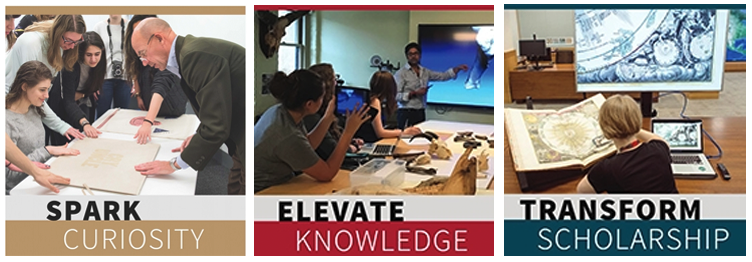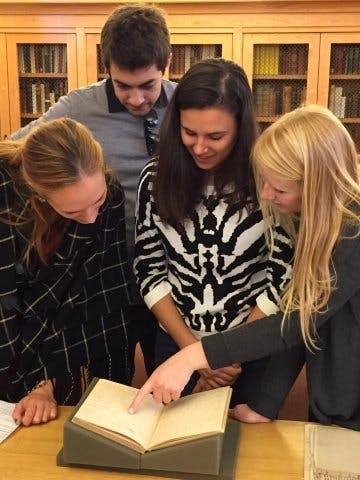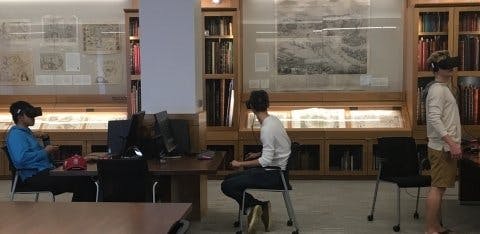
Stanford, California—The Cecil H. Green Library at Stanford University is celebrating 100 years of service. While the library system itself dates back to the opening of the university, the development of a standalone grand library building was a pursuit initiated and led by Jane Stanford, the university’s cofounder.
Stanford took many by surprise when in the early 1900s she proposed the construction of a library building capable of holding a million volumes. In a letter drafted to students for the laying of the library’s cornerstone, she explained her decision to build a library that far exceeds the university’s current needs, "I deeply and fully appreciate what a well-selected and sufficient library means to a university. With a grand library, we would be able to call to our assistance the ablest and best professors in the land, and our own honored professors could do better work."
Unfortunately, Stanford passed away before the new library was completed. In addition, the library building that she spoke of never opened, as it was destroyed by the 1906 earthquake just before its official opening. Despite the devastating loss, Jane Stanford’s case for a strong library took root, and the university opened a new library, at its current location, on July 14, 1919. In 1980 it was named the Cecil H. Green Library after the longtime Stanford friend and founder of Texas Instruments.
“The centennial is about much more than the construction of a building,” said Michael Keller, university librarian and vice provost for teaching and learning. “Beyond100 recognizes the drive and motivation of Jane Stanford and celebrates a longstanding legacy at Stanford Libraries of anticipating the future needs of scholars and students across everything we do.”
The Beyond100 theme celebrates 100 years of looking forward and the Libraries’ position as a launchpad to spark curiosity, elevate knowledge and transform scholarship. A series of events have been planned that feature advances made in the Libraries and showcase current projects underway. The festivities will culminate with an event at noon on Monday, July 15, 2019.

Nexus of intellectual life on campus
The Libraries have grown tremendously since the university was founded, and today’s library includes a dynamic discovery environment facilitating access to a suite of both digital and print resources, in addition to a network of discipline-focused libraries across campus. Digital tools developed by Stanford Libraries enable students, faculty and scholars to access, manipulate and investigate hundreds of thousands of items from any location in the world.
Over the last 10 years, Stanford Libraries digital endeavors have become models for enhancing access, preservation, and use of digitized scholarly material. The International Image Interoperability Framework (IIIF) is one example of Stanford Libraries’ global leadership.

Access to image-based resources is fundamental to research, scholarship, and the transmission of cultural knowledge in the 21st century. Until now, much of the Internet’s image-based resources have been locked up in silos, with access restricted to custom-built applications. Together, with the Bodleian Libraries at Oxford University and the British Library, Stanford Libraries conceived of and developed IIIF, which allows scholars to access, annotate, and investigate digital objects from across a global network of nearly 150 libraries, archives, and museums. IIIF applies standards that allow images of books, maps, manuscripts, music scores, photography, and art to be displayed uniformly, regardless of which institution holds the object.
Beyond technology, Special Collections are an important way that Stanford differentiates itself from its peers. The collections themselves are noteworthy, but more important is connecting those collections with students. The libraries’ collection of rarities does not sit in a separate building, instead the Special Collections reading room and instructional classroom are located in the heart of the Bing Wing of Green Library. That colocation has been important as Keller, along with Roberto Trujillo, head of special collections, worked to make Special Collections more inviting to undergraduate students. Special Collections serves those engaged in intensive research, but it has become an active hub for teaching where undergraduates are encouraged to not just learn about history but to touch and experience it firsthand.

“The idea of bringing forward Special Collections in surprising ways that encourage the same kind of serendipity many have come to expect when roaming library stacks is a notion we continue to explore,” said Keller. In 2016, the Libraries opened the David Rumsey Map Center on the 4th Floor of Green Library. Upon entry into the space, cartographic material, and technology surround, creating a unique teaching and research experience. Classes from disciplines ranging from Earth to Art have convened in the Map Center to engage with rare maps and the data, art and cultural clues that are included on their surfaces.
Just as Jane Stanford looked ahead and built a library that suited the needs of future students and faculty, Stanford Libraries looks ahead to evolve its portfolio to make use of new advances liked linked data or artificial intelligence. While constantly piloting new approaches and methodologies, Keller insists, “what has never changed, is our commitment to stimulating respectable discussion and debate, serving as a refuge for knowledge creators, a destination for the curious and curating information that fuels discoveries, which ultimately benefit society,” said Keller.